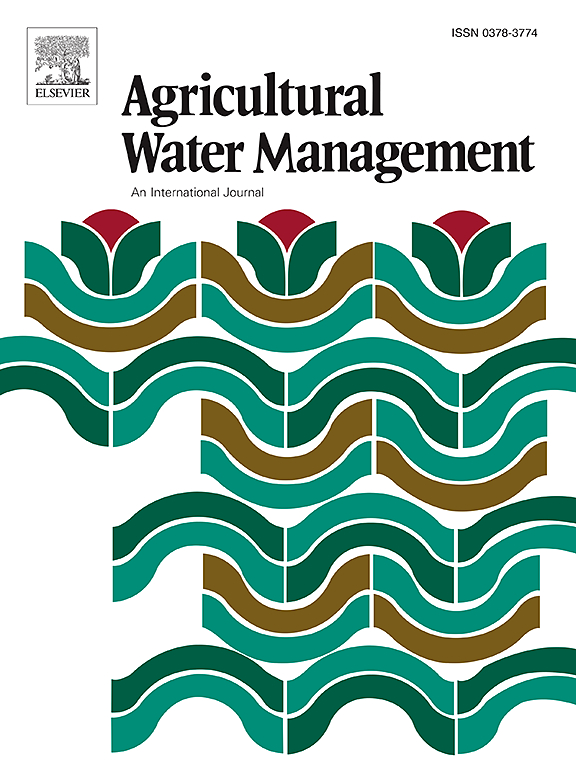Integrated effects of polyethylene/biodegradable residual film on soil hydrothermal conditions and spring maize growth in rain-fed dryland
IF 5.9
1区 农林科学
Q1 AGRONOMY
引用次数: 0
Abstract
Mulch technology has significantly enhanced agricultural production in arid and semi-arid regions worldwide. However, the long-term use of traditional plastic mulch has caused environmental concerns due to persistent residues. Biodegradable mulch offers a potential solution to these issues. But little is known about the effects of different residual films on soil hydrothermal properties, and how this ultimately drives maize growth and yield formation. To address this gap, we conducted a two-year field experiment involving low-density polyethylene film (LDPE) and polylactic acid film (PLA), at three residual levels (75 kg ha−1,150 kg ha−1, and 300 kg ha−1), with a control having no residual film. Our findings showed that increased amounts of residual film increased soil bulk density and decreased soil porosity, leading to decreased soil water storage and increased soil temperature. The structure equation model indicated that these deteriorated soil hydrothermal conditions hindered maize root growth, resulting in lower yield and hydrothermal use efficiency. In the second year of this experiment, the film mass density of PLA treatments declined significantly compared to LDPE, leading to fewer adverse effects on soil physical structure, moisture, and temperature. Betters soil hydrothermal environment favor maize biomass accumulation and yield formation. Compared to LDPE treatments, the grain yield, water use efficiency, and soil accumulated temperature use efficiency of PLA treatments increased by an average of 3.98 %, 3.86 %, and 4.42 %. Therefore, we recommend eco-safe PLA mulch as a sustainable alternative to LDPE mulch for maize production in arid and semi-arid areas.
聚乙烯/生物降解残留膜对雨水灌溉旱地土壤水热条件和春玉米生长的综合影响
地膜覆盖技术大大提高了全球干旱和半干旱地区的农业产量。然而,长期使用传统塑料地膜会产生持久残留物,引起环境问题。生物降解地膜为解决这些问题提供了一个潜在的解决方案。但人们对不同残留膜对土壤水热性质的影响,以及这种影响最终如何推动玉米生长和产量形成知之甚少。为了填补这一空白,我们进行了一项为期两年的田间试验,试验涉及低密度聚乙烯薄膜(LDPE)和聚乳酸薄膜(PLA)的三种残留量(75 千克/公顷-1、150 千克/公顷-1 和 300 千克/公顷-1),对照组没有残留薄膜。我们的研究结果表明,残膜量的增加会增加土壤容重,降低土壤孔隙度,导致土壤蓄水量减少和土壤温度升高。结构方程模型表明,这些恶化的土壤水热条件阻碍了玉米根系的生长,导致产量和水热利用效率降低。在实验的第二年,与低密度聚乙烯相比,聚乳酸处理的薄膜质量密度显著下降,从而减少了对土壤物理结构、水分和温度的不利影响。更好的土壤水热环境有利于玉米生物量的积累和产量的形成。与低密度聚乙烯处理相比,聚乳酸处理的谷物产量、水分利用率和土壤积温利用率平均提高了 3.98 %、3.86 % 和 4.42 %。因此,我们建议在干旱和半干旱地区使用生态安全的聚乳酸地膜作为低密度聚乙烯地膜的可持续替代品。
本文章由计算机程序翻译,如有差异,请以英文原文为准。
求助全文
约1分钟内获得全文
求助全文
来源期刊

Agricultural Water Management
农林科学-农艺学
CiteScore
12.10
自引率
14.90%
发文量
648
审稿时长
4.9 months
期刊介绍:
Agricultural Water Management publishes papers of international significance relating to the science, economics, and policy of agricultural water management. In all cases, manuscripts must address implications and provide insight regarding agricultural water management.
 求助内容:
求助内容: 应助结果提醒方式:
应助结果提醒方式:


